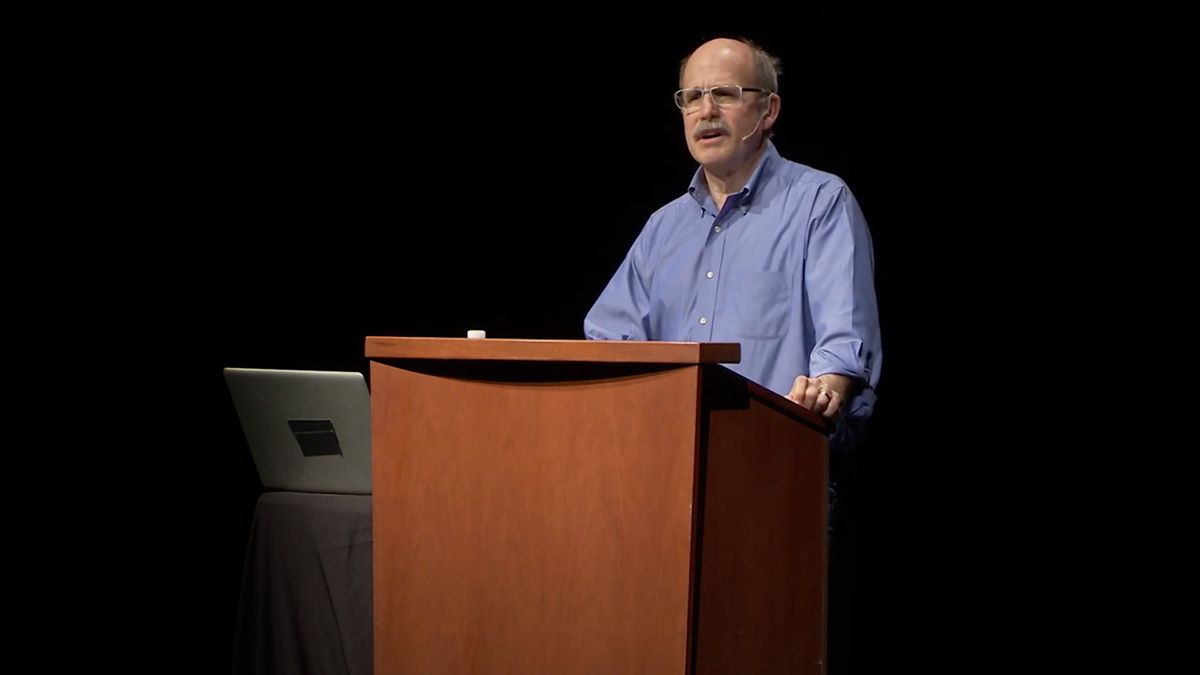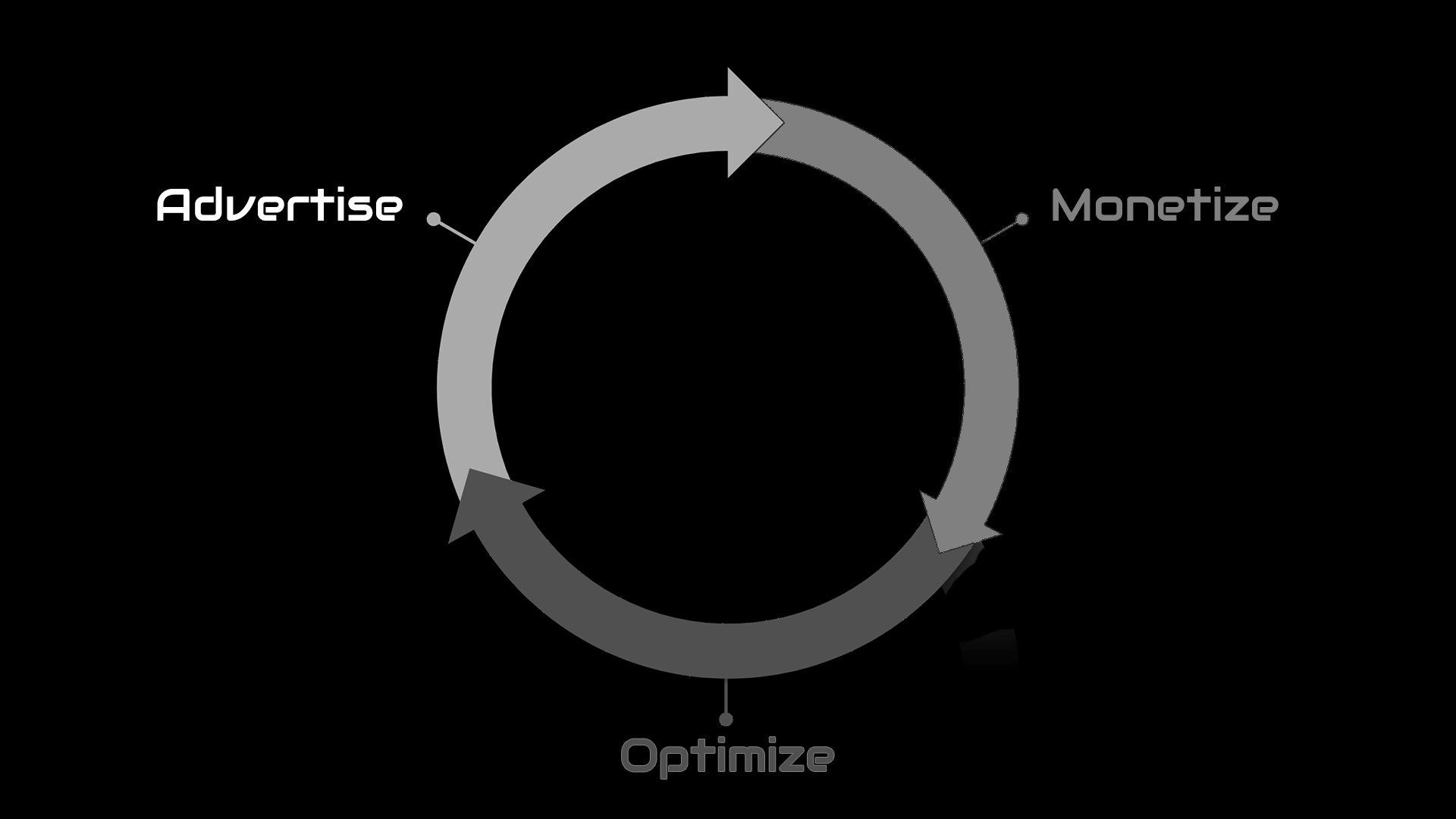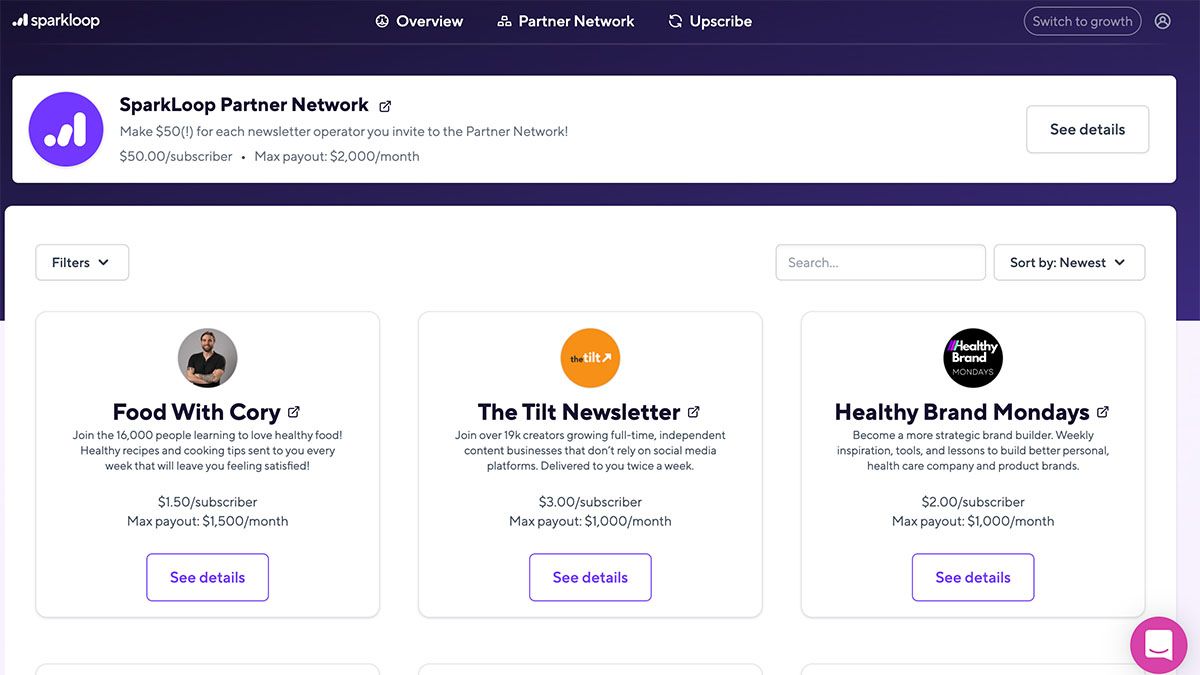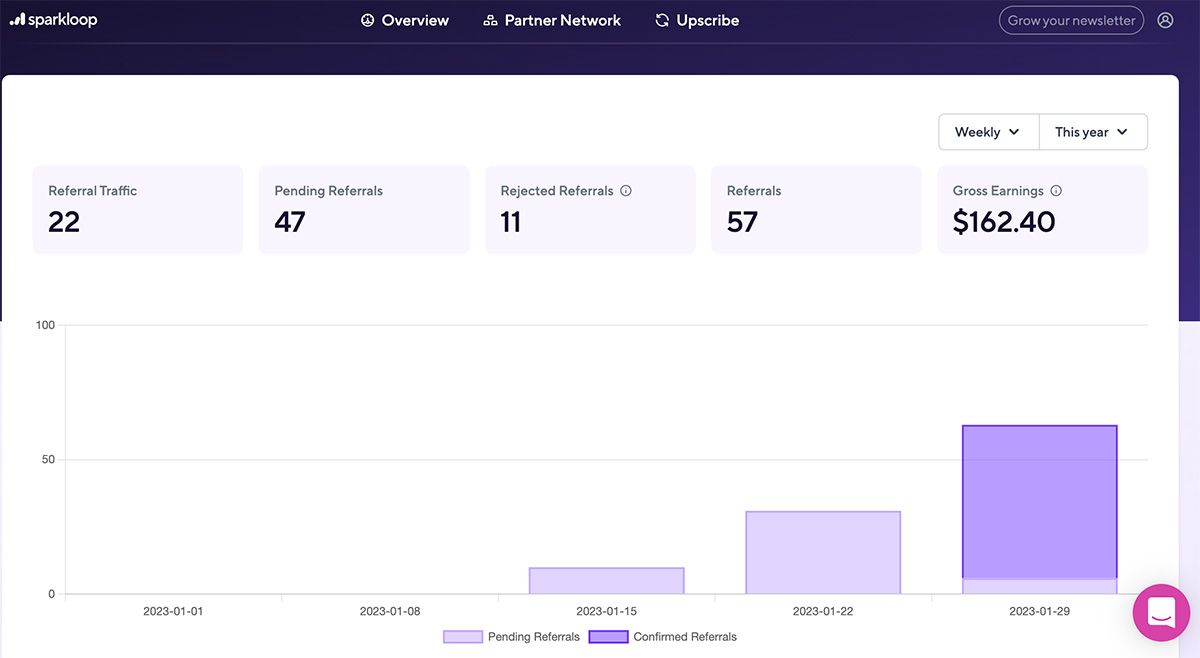A Virtuous Cycle of Newsletter Growth
Newsletter creators —publishers— can use advertising, monetization, and optimization to create a virtuous cycle of subscriber growth and profit.

A number of savvy newsletter creators have discovered a virtuous cycle for subscriber growth that generates positive cash flow and expands the newsletter's audience.
The key to this flywheel is to generate real revenue with the newsletter, i.e. monetize it.
vir·tu·ous cy·cle /ˈvərCH(ə)wəs ˈsīkəl/
noun:
1. a chain of events in which one desirable occurrence leads to another
desireable occurance that further promotes the first occurrence and so on
resulting in a continuous process of improvement.
2. a business process wherein good actions or events produce additional
positive actions and results, especially when those actions are repeatable.
fly·wheel /ˈflīˌ(h)wēl/
noun:
1. in mechanics or engineering a heavy revoling wheel used to increase
momentum, producing relatively greater stablity or reserving energey.
2. in business a cycle of small wins building on one another to generate
momentum and growth.
Engagement Economy
Before we discuss how the virtuous cycle of newsletter growth works, let's put email newsletters in context.
Circa 2023, Americans are living in the engagement economy (sometimes called the creator economy).
We are not in our context talking about the technology stack that enables individuals to create and share content, which is how the term creator economy is sometimes employed. Rather we mean that engagement is the scarcity the macro economy is trying to solve.
The idea is that every macroeconomic charge in U.S. history has been the result of some scarcity, according to futurist Paul Saffo. The industrial economy sought to overcome the scarcity of manufactured goods.

Once manufactured goods were widely available, the consumer economy emerged and developed both consumer credit and the advertising industry to overcome a scarcity of consumer desire. There was an abundance of products to be sold and folks needed reasons to buy them, so the economy effectively created instant gratification. Why wait when you can charge it or something like that.
Today, we all walk around with a portable computer in our pockets. It beeps, bings, and blicks notification after notification. There is never been more information available so close at hand. We are each overrun with information.
Economist Herbert Simon put it this way. "What information consumes is rather obvious: it consumes the attention of its recipients. Hence a wealth of information creates a poverty of attention, and a need to allocate that attention efficiently among the overabundance of information sources that might consume it.''
Attention or, perhaps more specifically, engagement is the thing our present macro economy screams for.
Content creators create that engagement, often by curating information and sharing what is most important.
Newsletter Creators
So with the scarcity of engagement in mind, let's turn our focus back to newsletter creation and how some newsletter entrepreneurs are creating a virtuous cycle of newsletter growth.
Email newsletters can help solve for attention and engagement. The best newsletters are not some corporate production from a big publishing company made bland by its need to appeal to the masses, but rather the best newsletters are the opinionated views of thoughtful writers who are taking the time truly know a subject and share something meaningful about it.
In exchange for generating good content that folks want to read, newsletter creators can monetize their newsletters and generate thousands of dollars in revenue.
Recently, I have been working with a newsletter that has 200,000 subscribers and publishes twice per week on Wednesdays and Fridays. The newsletter is generating approximately $30,000 in monthly sponsorship revenue or $360,000 annually.
There are, of course, expenses associated with all of that revenue. For example, this newsletter creator pays 23.5 percent to an agency to sell sponsorships, and it costs more than $1,000 per month to send and maintain the email newsletter. But the newsletter is nonetheless a great source of revenue.
Newsletter Growth
This same newsletter —the one generating $360,000 in sponsorship revenue— is also growing rapidly, adding thousands of new subscribers each week, using the cycle or flywheel, I want to share with you.

This cycle has three nodes or points.
Advertise for New Subscribers
This virtuous cycle of newsletter growth starts with advertising. You need to promote your newsletters and get new subscribers.
Your ads might run on the Meta platform, i.e. Facebook or Instagram. They could be on Google, Reddit, or just about any other site. But for the purpose of this article, I want to focus on using the Sparkloop Partner Network.

I will use this example because you can set a specific cost per new subscriber, and you don't necessarily need an incentive, like a free ebook or something similar.
At the time of writing, in order to become part of the Sparkloop Partner Network a newsletter creator would need to schedule a call with the Sparkloop team. But once you have passed through that interview there would be dozens if not hundreds of other newsletter creators recommending your newsletter. Suddenly, you will have loads of new subscribers.
Monetize the Subscriber Quickly
The next step is to monetize new subscribers as quickly as possible. When you add someone to your subscriber list you want to make money from that new subscriber within minutes or weeks not months or years. And there are three ways you can do this.
- Sell them something,
- Have ever-growing sponsorship revenue,
- Get paid for a referral.
Selling a product, course, or service can begin the moment you add someone to your email list. The welcome series might include a special offer or an invitation. The product doesn't even need to be your own. A food newsletter, for example, could share a list of favorite kitchen gadgets that have affiliate links for Amazon or Le Creuset.
Next, new subscribers can add to the value of newsletter sponsorships. If you sell your newsletter sponsorship based on a flat rate, you can increase that rate based on having new subscribers. Or if you sell the newsletter sponsorship on a cost-per-thousand (CPM) impressions or cost-per-click (CPC) having more subscribers should also equate to more revenue. It is worth mentioning that you don't even have to sell these sponsorships yourself. I helped ConvertKit build a newsletter selling agency that places hundreds of thousands of dollars worth of sponsorships.
Finally, you can get paid to refer other newsletters. This is the flip side of the Sparkloop Partner Network mentioned above. When a new subscriber signs up for your newsletter, you can give them the option to sign up for other newsletters that you recommend.

In each of these examples, you are earning money incrementally as you add new subscribers to your newsletter list.
Optimize for Growth
So let's do a little math. Imagine you are paying $1.50 for new subscribers via the Sparkloop Partner Network or maybe you are getting new subscribers for $1.50 each from ads on Reddit. In either case, you can consistently get new subscribers for $1.50 each.
Next, let's say that you are monetizing those new subscribers so that on average you generate $3.00 for every new subscriber. Get ten new subscribers and you can expect $30.00 in revenue. And remember you don't need all ten to generate $3.00 each, it is just fine if one in ten new subscribers buys an online course for $30.00. What matters is that the revenue is consistent and reliable.
Finally, take some portion of the profit, let's say 80 percent and invest it in more advertising.
So in month one, you spend $600 to get 400 new subscribers at $1.50 each. Because you generate about $3.00 for every new subscriber, you enjoy $1,200.00 in revenue.
In month two, you invest $960.00 into advertising and recoup $240.00 of our original $600 investment. Your $960.00 worth of advertising earns your newsletter 640 new subscribers, generating $1,920.00 in revenue.
In month three, you invest $1,536.00 and pocket $384.00 which more than covers your original advertising investment, you are cash flow positive. The new ad investment generates 1,024 new subscribers.
So in three months, you have added 2,064 newsletter subscribers and turned a profit. You have a newsletter growth engine that will keep adding to your audience and keep money flowing so long as you keep providing real value to your subscribers.
| Month | Ad Investment | New Subscribers | Revenue from Subscribers | Revenue taken |
|---|---|---|---|---|
| 1 | $600 | 400 | $1,200 | $240 |
| 2 | $960 | 640 | $1,920 | $384 |
| 3 | $1,536 | 1,024 | $3,072 | $614 |
| 4 | $2,458 | 1,638 | $4,915 | $983 |
| 5 | $3,932 | 2,621 | $7,864 | $1,573 |
| 6 | $6,291 | 4,194 | $12,583 | $2,517 |
If you could keep this cycle up for six months, the numbers start to become nearly unbelievable with 4,194 new subscribers in a single month and a net profit of $2,517.00. If things go on like this for a year, the newsletter would have garnered 186,983 new subscribers and made a profit of more than $112,000.000.
Now that is a virtuous cycle of newsletter growth.
Link Disclosure: This article includes an affiliate link to Sparkloop. The fact that Sparkloop has a paid link program did not influence the editoral, but YMH is using the link as a way to generate revenue. We thought you should know.